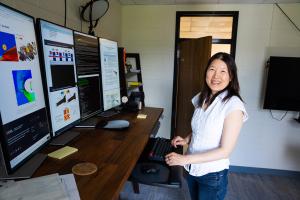Gregory J. Gerling

About
My research interests span the fields of haptics, computational neuroscience, biomechanics, human–machine interaction, UX/UI, and human factors and ergonomics. At present, we are investigating cutaneous and proprioceptive cues that convey an object’s softness, and neural and biomechanical bases of both social and emotional touch and soft tissue manipulation or massage. My research is highly collaborative and interdisciplinary and primarily lies in the domain surrounding human health. We employ computational models, statistical analysis, data science, and imaging techniques, design and build unique mechanical and electrical devices, and perform psychophysical experiments with human participants. This work is often done in close collaboration with neuroscientists, in human and mouse model systems. A thorough understanding of tactile cues in early, peripheral stages is key to deciphering the whole perceptual chain, as well as engineering sensors and human-machine interfaces.
I have been the principal investigator on several federally funded grants from the National Institutes of Health, National Science Foundation, DARPA, and other agencies and companies. I am a senior member of the IEEE and have mentored more than 20 PhD and MS students and published over 50 journal and conference papers. I served as the co-chair of the IEEE Haptics Symposium for 2018 and 2020, co-editor of the IEEE World Haptics Conference in 2017 and 2019. I also served as the chair of the IEEE Technical Committee on Haptics and associate editor of the IEEE Transactions on Haptics.
Before entering academia, I had industry experience at Motorola, NASA Ames Research Center, and Rockwell Collins. I currently consult on UX/UI design and evaluation in the field of healthcare. I have taught courses in human factors, human-machine interaction, and user experience design for several years. In my undergraduate teaching, one of my goals is to work with industry clients to orient students toward acquiring real-world experience.
Education
Ph.D. Industrial Engineering, University of Iowa, 2005
M.S. Industrial Engineering, University of Iowa, 2001
B.S. Computer Science, University of Iowa, 1998
My research interests surround the interface of people and machines - focusing in particular on the sense of touch. My group mixes computational modeling efforts with the design and prototyping of devices with which people directly interact.


